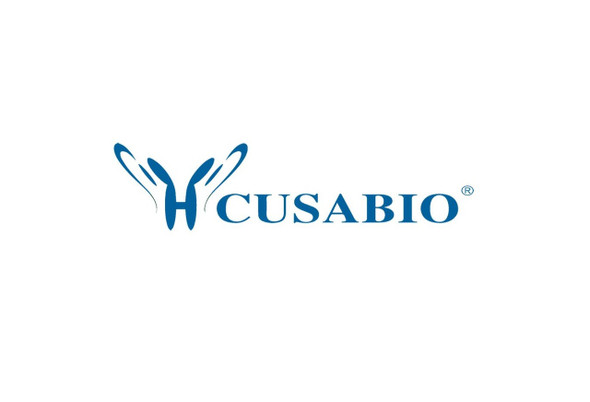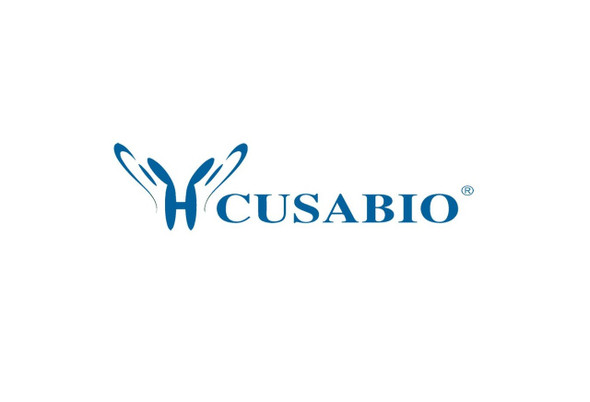Cusabio Human Recombinants
Recombinant Human Potassium channel subfamily K member 2 (KCNK2), partial | CSB-YP012070HU
- SKU:
- CSB-YP012070HU
- Availability:
- 25 - 35 Working Days
Description
Recombinant Human Potassium channel subfamily K member 2 (KCNK2), partial | CSB-YP012070HU | Cusabio
Alternative Name(s): Outward rectifying potassium channel protein TREK-1 TREK-1 K(+) channel subunit Two pore domain potassium channel TREK-1 Two pore potassium channel TPKC1
Gene Names: KCNK2
Research Areas: Neuroscience
Organism: Homo sapiens (Human)
AA Sequence: MLPSASRERPGYRAGVAAPDLLDPKSAAQNSKPRLSFSTKPTVLASRVESDTTINVMKWKTVSTIFLVVVLYLIIGATVFKALEQPHEISQRTTIVIQKQTFISQHSCVNSTELDELIQQIVAAINAGIIPLGNTSNQISHWD
Source: Yeast
Tag Info: N-terminal 6xHis-tagged
Expression Region: 1-143aa
Sequence Info: Partial
MW: 17.7 kDa
Purity: Greater than 90% as determined by SDS-PAGE.
Relevance: Ion channel that contributes to passive transmembrane potassium transport (PubMed:23169818). Reversibly converts between a voltage-insensitive potassium leak channel and a voltage-dependent outward rectifying potassium channel in a phosphorylation-dependent manner (PubMed:11319556). In astrocytes, forms mostly heterodimeric potassium channels with KCNK1, with only a minor proportion of functional channels containing homodimeric KCNK2. In astrocytes, the heterodimer formed by KCNK1 and KCNK2 is required for rapid glutamate release in response to activation of G-protein coupled receptors, such as F2R and CNR1
Reference: "Cloning, localisation and functional expression of the human orthologue of the TREK-1 potassium channel."Meadows H.J., Benham C.D., Cairns W., Gloger I., Jennings C., Medhurst A.D., Murdock P., Chapman C.G.Pflugers Arch. 439:714-722(2000)
Storage: The shelf life is related to many factors, storage state, buffer ingredients, storage temperature and the stability of the protein itself. Generally, the shelf life of liquid form is 6 months at -20?/-80?. The shelf life of lyophilized form is 12 months at -20?/-80?.
Notes: Repeated freezing and thawing is not recommended. Store working aliquots at 4? for up to one week.
Function: Ion channel that contributes to passive transmembrane potassium transport
Involvement in disease:
Subcellular Location: Isoform 1: Cell membrane, Multi-pass membrane protein, SUBCELLULAR LOCATION: Isoform 2: Cell membrane, Multi-pass membrane protein, SUBCELLULAR LOCATION: Isoform 4: Endoplasmic reticulum membrane, Multi-pass membrane protein
Protein Families: Two pore domain potassium channel (TC 1.A.1.8) family
Tissue Specificity: Isoform 4 is detected in kidney, adrenal gland and brain where it is preferentially expressed in the amygdala but not found in thalamus, hypothalamus, hippocampus or substantia nigra.
Paythway:
Form: Liquid or Lyophilized powder
Buffer: If the delivery form is liquid, the default storage buffer is Tris/PBS-based buffer, 5%-50% glycerol. If the delivery form is lyophilized powder, the buffer before lyophilization is Tris/PBS-based buffer, 6% Trehalose, pH 8.0.
Reconstitution: We recommend that this vial be briefly centrifuged prior to opening to bring the contents to the bottom. Please reconstitute protein in deionized sterile water to a concentration of 0.1-1.0 mg/mL.We recommend to add 5-50% of glycerol (final concentration) and aliquot for long-term storage at -20?/-80?. Our default final concentration of glycerol is 50%. Customers could use it as reference.
Uniprot ID: O95069
HGNC Database Link: HGNC
UniGene Database Link: UniGene
KEGG Database Link: KEGG
STRING Database Link: STRING
OMIM Database Link: OMIM









